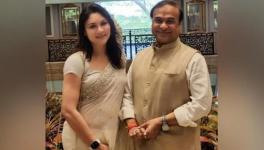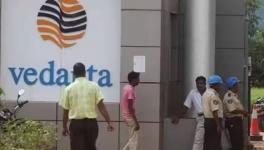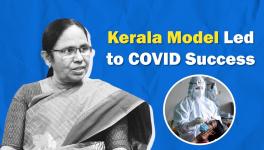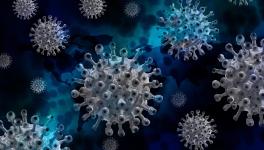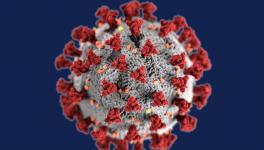How Dharavi Succeeded in Containing COVID-19 by Following Kerala Model

With eight new cases on Friday, the COVID-19 count in Dharavi, the largest slum in Asia, touched 2,309. A Brihanmumbai Municipal Corporation (BMC) official said that Dharavi now has only 551 active COVID-19 cases, as 1,672 patients have been discharged post-recovery.
Dharavi is spread over 2.5 square kilometres and has a population of around 6.5 lakh. With such a high density, the area was particularly vulnerable to the spread of novel coronavirus, as social distancing is almost impossible for the inhabitants of the slum.
Dharavi recorded its first case on April 1. By April, Dharavi had 491 cases with a growth rate of 12% and a case doubling period of 18 days. The growth rate was reduced to 4.3% in May and 1.02% in June with BMC’s proactive measures. The new number of infections reported each day also came down to 19 by the third week of June from 43 in May. The case doubling rate in the area is now 140 days as per the average of the last seven days and its average growth rate is 0.55%, said an official from the BMC. The civic body has, however, stopped disclosing the number of deaths from Dharavi for a few days now, without specifying any reason.
When Dharavi was witnessing a steep increase in new infractions, the state had decided to adopt the ‘Kerala Model’ to contain the further spread of the virus in the slum. Maharashtra Health Minister Rajesh Tope had spoken to his counterpart in Kerala, KK Shailaja, who had succeeded in containing the spread of the virus significantly. During the meeting, Shailaja reportedly explained the protocols and preventive measures followed in Kerala.
Read More: How to Tackle a Pandemic During Community Transmission
In Kerala, the Health Department followed strict contact tracing and ensured quarantine for the people with symptoms and treatment for all who have tested positive. The state government strengthened social security by ensuring that the marginalised and vulnerable sections of the society were not affected by the regulatory measures.
“The entire state machinery and the surveillance network was activated and the standard operating procedures for screening, diagnosis, and public health interventions were implemented in accordance with international guidelines,” said KK Shailaja, presenting the Kerala Model when she participated in a panel discussion on the United Nations’ World Public Service Day.
In the last week of May, the Maharashtra government sent an official letter seeking doctors and nurses following which, a 150-member medical team from Kerala comprising 50 doctors and 100 critical care nurses landed in Mumbai to assist the Maharashtra government in its fight against the pandemic. The team was led by the deputy superintendent of Thiruvananthapuram medical college and hospital, Dr SS Santhosh Kumar.
“An advanced team has already reached Seven Hills Hospital in Mumbai. Doctors without borders,” tweeted Kerala finance minister Thomas Isaac after this development.
State minister and Congress MLA from Dharavi, Varsha Gaikwad, had then explained: “We are trying to set up large numbers of isolation centres so that the infected and suspected people from Dharavi will be relocated there. This decision was taken as the home quarantine strategy is not helping. We are also focusing on contact tracing. Our first task is to decongest Dharavi by asking migrants to go to their native states.”
According to Kiran Dighawkar, the assistant municipal commissioner of BMC, G North ward [under which falls Dharavi], the 'chases the virus' policy helped the state control the spread in Dharavi significantly. "Nearly four lakh people have been screened by BMC health workers, private clinic doctors, mobile van, Municipal dispensary," Dighawkar said.
"We worked on the formula of screen[ing] the maximum number of people for fever, oxygen level, and other symptoms and isolat[ing] them and test[ing] them proactively," he added.
Maharashtra government has set up fever clinics to identify the people showing symptoms and they will be isolated immediately to contain the spread of the virus, Dighawkar explained.
"All hostels, lodges, and schools were taken over by the BMC to provide adequate quarantine facilities," Dighavkar said further.
This is what had been done by the Kerala government in the initial days itself.
Lakhs of people use public toilets in Dharavi, which has 225 community toilets, 100 public toilets and 125 MHADA toilets. Since people have no other option than using these toilets, authorities feared transmission of the virus via this source of contact and so, the BMC decided to sanitise these facilities twice a day.
According to reports, over 25,000 grocery kits have been distributed to families living in Dharavi. Also, over 17 lakhs food packets have been distributed. Earlier, 21,000 food packets were being distributed on a daily basis, which has come down to 7,000 packets per day.
Read more: Is ICMR Under Political Pressure to Rush the Launch of COVID Vaccine on August 15?
(With inputs from PTI)
Get the latest reports & analysis with people's perspective on Protests, movements & deep analytical videos, discussions of the current affairs in your Telegram app. Subscribe to NewsClick's Telegram channel & get Real-Time updates on stories, as they get published on our website.










